Worried About Climate Change? Move to These Cities
I have no plan on dictating what is “fake news” or not, but the severity of the wildfires across the United States and Australia, and tornadoes across the midwest may not be the last time we see natural disasters of that magnitude. Without any drastic change in emissions, the unpredictable temperatures, extreme weather events, and longer, hotter and drier summers are inevitably our future.
It's to no surprise that as humans we are in “flight or fight” mode- emphasis on flight. We’re already starting to contemplate whether we should move based on places we think will be less affected by the inevitable climate change.
Some local governments in smaller cities are even marketing themselves as “climate change havens”. But is advertising that way realistic?

Probably not. It could lead to issues with both the cities being fled from and the cities being fled to. Depending on how quickly people are migrating, it could lead to housing, infrastructure, and industry issues, so as it booms the economy in one city it could then hinder the other.
Instead of moving to a city claiming to be a “climate change haven”, consider a city that’s active in mitigating its environmental impact and preparing for an uncertain future. After all, climate change’s consequences are unpredictable. With changing projections, no city can promise they’ll be free from climate change effects in 2050.
Here are the variables to consider when you move for climate change:
- City programs for recycling, reducing emissions, and creating green spaces.
- Availability of alternative energy sources.
- Future likelihood of extreme weather events.
- The city’s disaster readiness.
- Community involvement in fighting climate change.
With this in mind, we’ve rounded up the top ten cities in America who are doing actual work to fight climate change, and would be good prospects for places to live in the coming years.
The Ten Best Cities to Live in 2050
Let's look at the 10 cities that we think will be more livable by the time 2050 comes around.
1. Seattle, WA
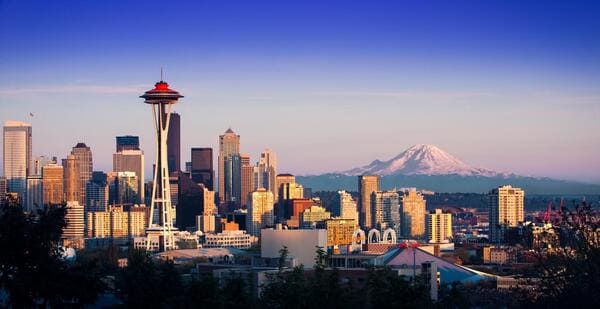
Seattle ranks high even on international lists of cities fighting climate change. Amongst sustainable cities in the nation, Seattle earned the title of “most sustainable city” from the non-profit STAR Communities. While the cost of living is high, there’s no state income tax.
Our favorite Seattle feature:
Advocacy groups: if you want to become more involved in climate change, there’s plenty of resources in Seattle fueled by like-minded people dedicated to saving the planet. Check out Washington Nature, part of The Nature Conservancy and 350 Seattle: Climate Justice.
2. San Francisco, CA

San Francisco will get hotter and drier from climate change, but right now the city is hard at work to fight and slow down climate change. It’s in this coastal city where the fewest citizens commute by car. It makes sense, as it scores the highest in the country for civic engagement by its citizens. If you’re looking to live in a large community of conscious people dedicated to the environment, San Francisco is it.
Our favorite San Francisco feature:
Bicycles: it’s one of the most bicycle-friendly cities in the country. As part of the public transportation system, they provide 320 bike-sharing stations that house 4,500 bicycles.
3. New York, NY

Despite the traffic and crowded streets, NYC is the most walkable city in America with an exceptional public transportation system. Owning a car isn’t necessary or even recommended. Plus, New Yorkers live in smaller spaces than other cities in the country, which reduces home heating and cooling costs and environmental impact.
Our favorite New York feature:
Farmer’s markets: You can visit 142 farmers' markets spread throughout the five boroughs every day of the week, and 28 of them run year round. Plus, EBT users get a discount and money back when they shop at the markets.
4. Boston, MA
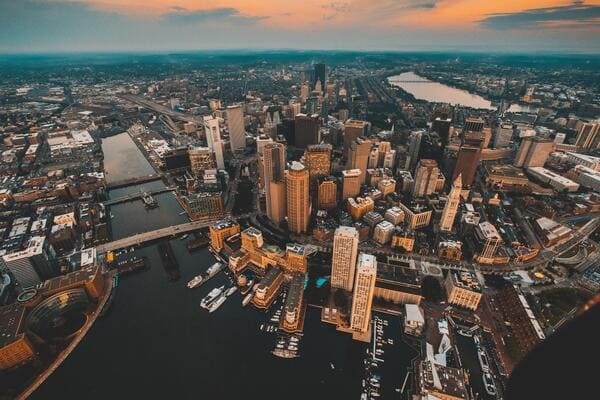
Boston was named the “most energy-efficient city” in America back in 2013, and they’ve signed the worldwide 80x50 pledge, committing to reduce their greenhouse gases by 80% by 2050. In 2015, all the city’s taxies went hybrid to support that commitment. It’s easy to live a green lifestyle when you live in an eco-conscious city. Boston was the first US metropolis to incorporate environmental design into its buildings and they help their citizens to live sustainably with initiatives like those to help residents purchase and install solar panels.
Our favorite Boston feature:
Community: There are so many resources to network with people interested in living a greener lifestyle in Boston, our favorites are the New England Women in Energy and the Environment and Boston Green Drinks.
5. Washington D.C.
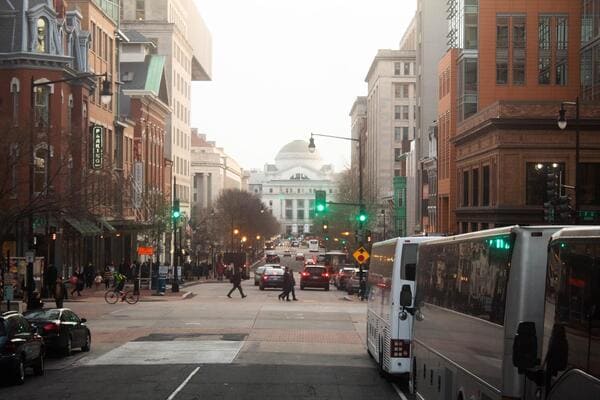
It’s not a surprise that the seat of the federal government is also home to agencies, lobbyists, and headquarters focused on environmental sustainability. They top the list, along with Seattle, for green jobs. The universities here offer programs of study focused on climate change, and there are plenty of ways to avoid owning a car in this walkable city, including 140 miles of bike lanes and paths and 1,400 buses that run on alternative fuels.
Our favorite Washington D.C. feature:
Green spaces: Besides the chance you’ll run into lawmakers at Starbucks and get to tell them to pass more climate change fighting legislation, the parks of Washington DC are the most exciting feature. There are 7,800 acres of parkland, the most among the most populated cities in the country.
6. Philadelphia, PA
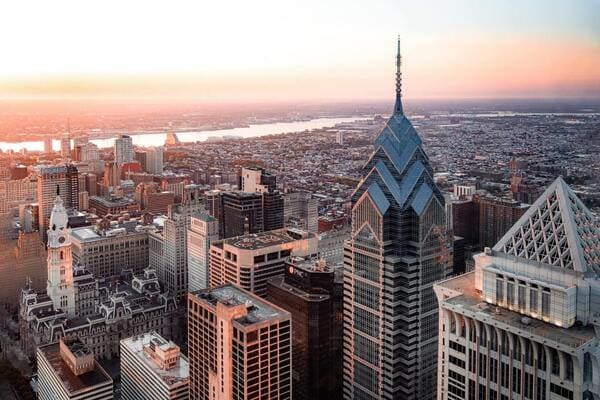
Philadelphia is an early adopter to changing its future for the better. In 2008, Mayor Nutter committed to making Philadelphia the greenest city in America by 2030. A major tenet of that green vision was a clean water initiative, including stormwater management. The city provides rain barrels for citizens and other sustainable solutions like public rain gardens, green roofs, and porous pavement.
Our favorite Philadelphia feature:
Free Stuff: Who doesn’t love free? There are myriad green programs in the city of brotherly love to help citizens to live more green. For example, the rain barrels we mentioned, two free trees per year to plant on your property, free recycling bins, free clean-energy alternatives, and the state’s first urban compost facility to open soon.
7. Minneapolis, MN
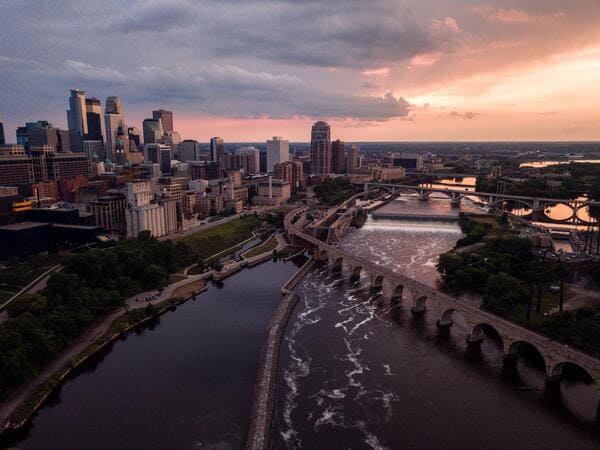
While Minneapolis will get hotter by 2080, it’s a city at low risk for other climate change-related weather events, like heat waves, cold snaps, fires, and floods. Both the twin cities earn high rankings amongst green cities. They’re recognized for great air quality, and alternative methods of commuting by citizens, such as walking, bicycling, carpooling and taking public transportation.
Our favorite Minneapolis feature:
Clean Car MN: Despite their impressive air quality and ongoing reduction of greenhouse gas emissions, Minneapolis is making big strides in changing the impact of cars on Minnesota’s environment. They’re increasing the amount and type of clean-energy cars available for purchase at Minneapolis car dealerships.
8. Los Angeles, CA
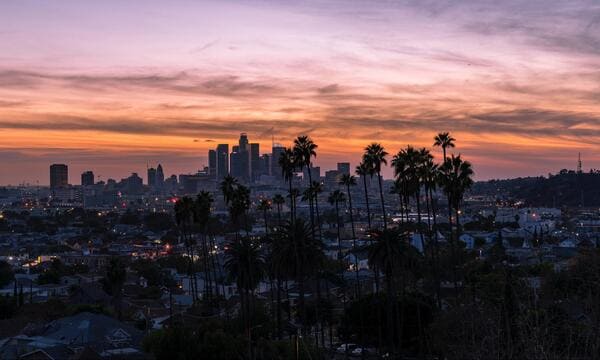
Los Angeles was one of the first cities in the country to add curbside recycling to metropolitan services. The city still diverts 76% of waste to recycling, one of the highest rates in the US. The city government’s dedication to fighting climate change requires municipal buildings to meet LEED requirements, creates local jobs in clean energy, and retrofits building for solar installation and more. 14% of energy in Los Angeles comes from alternative sources; you can practice sustainability just by turning on your lights at home.
Our favorite LA feature:
City Services: If you’re ready to upgrade your home appliances with energy-conserving models, the city of Los Angeles will pick up your old models and recycle them for free, plus give you a $300 credit towards the purchase of new ones. And like Philadelphia, they provide free shade trees for residents to plant.
9. Denver, CO

Every year more office buildings in Denver convert to green spaces, either meeting LEED or Energy Star standards for building materials and energy usage. Back in 2006, the city committed to planting one million trees throughout the metropolitan area by 2025, along with providing care for the existing 2.2 million.
Our favorite Denver feature:
The Light Rail System: To combat sprawling development as Denver’s population booms, the Light Rail System provides commuter service connecting major suburbs with metropolitan Denver and the airport. Soon the rail system will connect Denver with two more cities along the front range, Boulder and Longmont.
10. Atlanta, GA
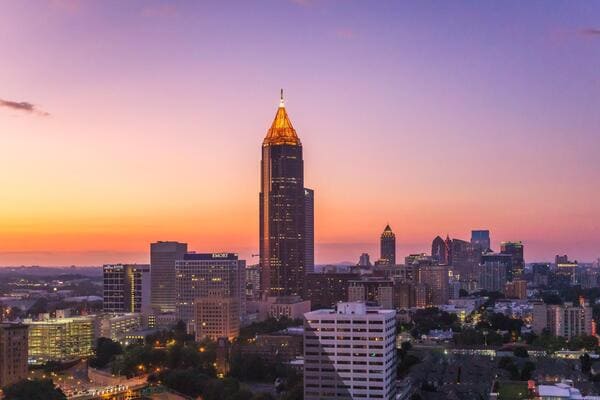
Atlanta ranked on the Arcadis Sustainable Cities Index, looking at the future potential of cities around the world based on how cities are meeting their citizen’s needs now and in the future. The mid-size city is notable because of its post-industrial potential and well-balanced economy. In weather models for the future, Atlanta shows minimal changes to the amount of precipitation, average temperature, and humidity, with low risk for flood, fire, heatwave, and cold events.
Our favorite Atlanta feature:
Serenbe: If you’re ready to commit to a green lifestyle to reduce your contributions to climate change, consider this eco-friendly colony just outside of Atlanta. The 400 member community has four hamlets with unique downtown areas built based on New Urbanism planning models of sustainability and community-based living.
How to Adapt to Climate Change
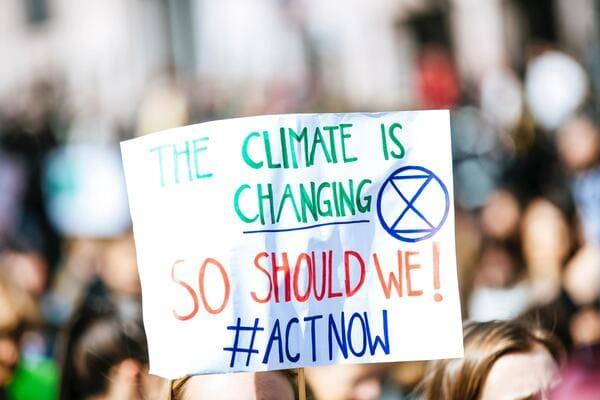
As the climate crisis worsens, chances are you’ll experience an extreme weather event no matter where you live. Power outages, water shortages, floods, and fires are becoming more commonplace every year, so we’re offering some adaptation tips.
- Set up an emergency kit for your household with some basic items. FEMA recommends keeping enough supplies for at least three days, in waterproof containers. Make sure everyone in your family knows where the kit is, and once a year empty the bag, check expiration dates, and update components. An emergency kit should typically include:
- Food and Water: 1 gallon per person per day, non-perishable food.
- Radio: A hand-crank powered radio in case of power outages.
- Personal hygiene: Wet wipes, hand sanitizer, toothpaste, and toothbrushes.
- Communication tools: whistles, a cell phone, extra chargers, and extra charger packs.
- First Aid Kit: include medications for family members and mylar space blankets.
- Water purification tablets remove contaminants from water after a disaster. One bottle has a shelf life up to four years, and one bottle can purify up to fifty gallons of water.
- In a waterproof container put copies of important family identification documents, including insurance and bank information.
- Download the FEMA app. It will tell you where to evacuate, how to connect with FEMA in your area, and send real time alerts from the National Weather Service
- To create an emergency plan with evacuation procedures, head to the website Ready.gov.
- Get involved by joining the Citizen Corps. FEMA provides free training to augment your city’s disaster preparedness and response capabilities.
How to Reduce Climate Impact while Moving
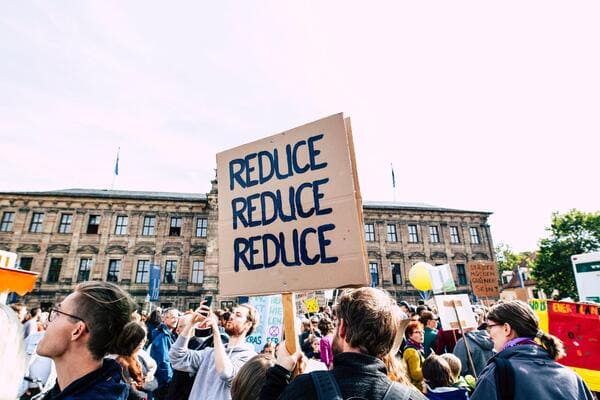
Cross-country moves create a significant impact on your carbon footprint. Any move involves two of the biggest emissions generators: transportation and waste disposal. Here’s how to plan an eco-friendly move:
- Reduce, reuse, recycle: Sell or donate unwanted items and reduce disposable belongings.
- Community source: Instead of buying new moving supplies, do friends and neighbors a favor by taking their used boxes and packing material. You can save a lot of money and help the environment by acquiring used moving boxes.
- Skip cardboard moving boxes: Moving companies now rent plastic moving bins as a disposable box alternative.
- Fuel efficient moving: Instead of renting a moving truck, consider using a portable storage company or a freight moving company to reduce carbon emissions.
- Carbon Offset: If within your financial realm, endorse programs that support renewable and efficient energy products that reduce carbon emissions.
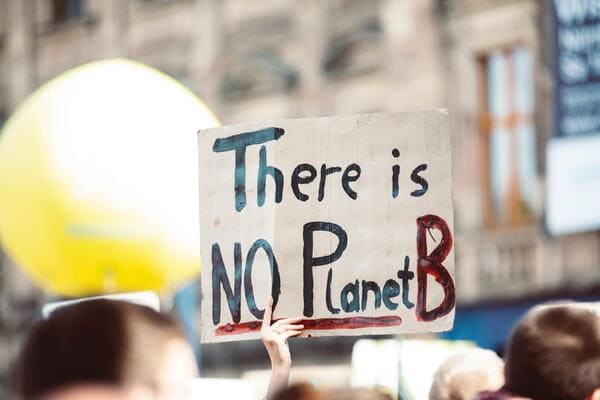
The world is changing, and we can’t hide from it- even in rural places. Consider moving somewhere your tax dollars will go toward supporting programs to fight and prevent climate change. In turn, you’ll be living in a safer community and be doing your part to help mother nature heal.
Methodology
We analyzed data from the Census Bureau, as well as climate change and disaster preparedness data from the Notre Dame Global Adaptation Initiative, eoMAC Wildland Fire Support and Arcadis Sustainable Cities Water Index for the core metrics used in this article.
We then compared the 50 biggest cities in the country across the four metrics below. Cities were awarded portions of points based on how they compare to other cities across these metrics. The top cities earned the most points out of 100.
- Civic Engagement with Climate Change: Ranked of availability of programs and resources to fight climate change.
- Governmental Support of Sustainable Practices: Number of programs and the success of those programs in mitigating the cities’ contributions to climate disaster.
- Existing Environmental Factors: The severity of the existing effects of climate change.
- Susceptibility to Climate Change: How the common effects of climate change will impact this city through 2050
Governmental Support: 50 points
- Recycling Diversion Rate: The amount of material diverted out of the landfill. Weight of recycling divided by weight of garbage plus weight of recycling, times 100. (double point)
- Public Transit Systems: AllTransit Performance Score evaluates connectivity, access to jobs, and frequency of service.(double point)
- Clean Energy Scorecard:American Council for and Energy-Efficient Economy graded 75 cities across 5 metrics: local government operation, community-wide initiatives, buildings, energy and water utilities, and transportation. (x) (whole point)
- Sustainable Cities Index: Arcadis evaluated the top 100 cities worldwide for their sustainable practices based on government investment in infrastructure, green spaces, health, and public transportation and how those needs benefit citizen. (double point)
- Energy Star Top Cities: Energy Star counts the number of buildings in a city that are Energy Star certified. (half point)
- Mayoral Commitment to the Paris Agreement: While the federal commitment committed to pulling out of the Paris Agreement’s climate goals, some city mayors committed their governments to maintaining the accord. (half point)
- Cost of Living: Numeo calculates the cost of living in major american cities relative to New York (100%), with rent, groceries, and local purchasing power. (whole point)
Existing Environmental Factors: 20 Points
- Air Quality: Data from the EPA AirNow website, with the average number of unhealthy days from 2000-2018 for sensitive groups. (whole point)
- Risk of Wildfire: Scored based off the number of acres destroyed by wildfire in the past ten years. (half point)
- Green Spaces: 2014 Data from the Humanitarian Data Exchange that calculates the amount of green space per capita. (half point)
- Disaster Readiness: Evaluated by the ND-Gain; a city’s readiness to deal with natural disaster and crisis. (whole point)
- Commute Times: BatchGeo tracked average commute times. (whole point)
- Water Stress: Watersheds, particularly in the Southwest, Great Plains, and Northwest, are considered stressed when water demand exceeds 40% of the water supply. In those areas the Water Stress Index is 0.4. Water demand may come from power plants, agriculture, and municipalities. (whole point)
Susceptibility to Climate Change: 10 Points
- Drought & flood risk: Rated as low, medium, or high risk for future droughts by the ND-Gain. (whole point)
- Extreme Temperatures: Number of days above 95 by 2050. Data from the interactive tool created by Climate Central who use data from Daymet and global climate models from the Coupled Model Intercomparison Project phase 5. (double point)
- Extreme Precipitation: Changes in the amount of precipitation in a city either increase or decrease. (whole point)
- Rising Ocean Levels: Data from the Urban Adaptation Assessment by the Notre Dame Global Adaptation Initiative (whole point)
- Changes in Humidity and Temperature: Came from a study published in Nature Communications that describes climate analogs for urban areas, focused on temperatures and humidity. (double point)
- Heat Waves and Cold Snaps: Probability of a future event where temperatures are above/below the 10th percentile for more than a 6 day period. Data from ND-Gain (whole point)
Civic Engagement: 20 Points
- Access to organic and local food: number of farmers stands, CSAs, locally sourced grocery stores, and co-ops within 25 miles of the city. (whole point)
- Civic Engagement and Innovation Capabilities: Scored out 100 by the ND-Gain (double point)
- Public Transportation: BatchGeo tracked the percentage of the commuting population that used public transportation. (whole point)
- Available jobs in Climate Change:Number of job listings under Climate Change and Green on Simply Hired (whole point)
Related Posts
By accepting you will be accessing a service provided by a third-party external to https://www.movinglabor.com/